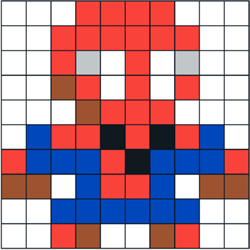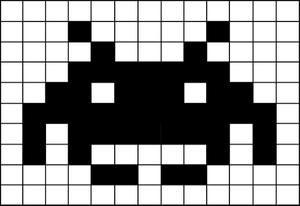Exam style questions
Download a pdf version of the test
Use the space below each question or a pen and paper to write your answer. When complete click the button for the answer and mark scheme.
NOTE: Answers typed into the browser will not be retained if you leave the page or refresh
Questions
Write the number base each device works with under its name. (3 marks)
| A computer |
An abacus |
A MAC address |
| Binary/Base2 |
Denary/Decimal/Base10 |
Hexadecimal/Base16 |
1 mark per correct answer
Convert the denary number 145 to both binary and hexadecimal. Show your working for both. (4 marks)
Convert to binary
Convert to hexadecimal
To convert it to binary:
| 128 |
64 |
32 |
16 |
8 |
4 |
2 |
1 |
| 1 |
0 |
0 |
1 |
0 |
0 |
0 |
1 |
145 - 128 = 17; 17 -16 = 1; 1 - 1 = 0
Fully correct - 2 marks 1 mark for either nibble
To convert to hexadecimal:
145/16 = 9 remainder 1 so 145 in hex is 91.
Fully correct- 2 marks, 1 mark for each hex digit.
What is 2.3GB in kB? Show your working. (2 marks)
2.3 x 1000 x 1000 = 2,300,000 kB
1 mark working 1 mark answer
Add the three bnary numbers below (3 marks)
| Carries |
1 |
|
|
|
1 |
1 |
1 |
|
| Number 1 |
0 |
1 |
0 |
0 |
0 |
1 |
1 |
0 |
| Number 2 |
0 |
0 |
1 |
1 |
0 |
0 |
1 |
1 |
| Number 3 |
0 |
1 |
0 |
0 |
0 |
0 |
0 |
1 |
| Answer |
1 |
0 |
1 |
1 |
1 |
0 |
1 |
0 |
Fully correct - 3 marks. If not 1 mark rightmost two digits of answer, 1 mark rest of answer, 1 mark carries showed
Complete a left bitshift of two places on the number shown and explain the effect this has on the denary value it represents. (2 marks)
| Columns |
128 |
64 |
32 |
16 |
8 |
4 |
2 |
1 |
Decimal |
| Number |
0 |
0 |
1 |
1 |
1 |
0 |
0 |
0 |
56 |
| Answer |
1 |
1 |
1 |
0 |
0 |
0 |
0 |
0 |
A left bitshift of two places multiplies the number by 2 twice so by 4 in total.
Correct binary number - 1 mark; Correct explanation - 1 mark
Explain the similarities and differences between ASCII and Unicode. (4 marks)
Both are character sets(1) and the first 128 codes of Unicode are the same as the ones for ASCII(1)
ASCII is either 7 or 8 bit where Unicode is either 16 or 32 bit(1) meaning Unicode ca represent a wider range of symbols including all the smbols for foreign languages.(1)
Explain what a pixel is and how they relate to bitmap images. (3 marks)
A pixel is the smallest identifiable part of an image.(1) Each pixel has its own colour (1) and the are aligned in rows and columns to create images.(1)
 Bitmap image: for those with visual difficulties the colours present are white, red, grey, brown, black and blue
Bitmap image: for those with visual difficulties the colours present are white, red, grey, brown, black and blue
Calculate the filesize of the bitmap image above in bytes. Show your working. (4 marks)
Width x Height x Bit depth = 10 x 10(1) x 3(1) = 300bits(1); 300/8 = 37.5 bytes(1)
Explain the effect on an image of increasing the colour depth from 3 to 4. (4 marks)
Colour depth is the number of bits used to store the colour of each pixel(1) with 3 bits you can have up to 8 colours and with 4 bits you can have up to 16(1) meaning the image will be more realistic in quality(1) but the size of the image file will be higher.(1)
 Black and white bitmap image
Black and white bitmap image
If 1 represents white and 0 represents black, write out the second row from the bottom of the image in binary. (1 mark)
1,1,1,1,0,0,1,0,0,1,1,1,1
Write out the second row of the image from the top using run length encoding using W for white and B for black.(1 mark)
Explain how analogue sound is converted into a digital sound file. (2 marks)
The anlogue sound wave is sampled at regular intervals(1) and the height/amplitude of the wave is measured and recorded.(1)
Explain how increasing the sample resolution affects a digital sound file. (3 marks)
The sample resolution is the number of bits used to store the height(1) meaning with more bits the height can be more accurately measured.(1) However this also means the filesize goes up.(1)
Explain how decreasing the sample rate affects a digital sound file. (3 marks)
The sample rate is the number of samples taken per second(1) meaning with more samples the height can be more accurately measured.(1) However this also means the filesize goes up.(1)
Explain what compression is and two reasons it is useful. (3 marks)
Compression is reducing the size of a file.(1) It's useful because then we use up less storage space and can save money on storage devices(1) and because it makes it faster to transmit.(1)
 Huffman tree
Huffman tree
Explain the how much space can be saved by encoding the word 'SEALS' using this tree. (3 marks)
The compressed code would be 11 00 1000 01 11 which is 12 bits(1) There are 5 characters so it would take 5 bytes or 40 bits to represent in 8-bot ASCII(1) So there is a saving of 28 bits or 3.5 bytes.(1)
<< Previous: Compression Data Rep home GCSE Home Next: Boolean logic >>